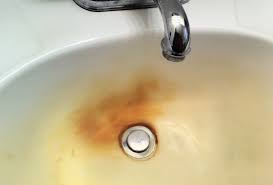You need iron to deliver oxygen by way of your red blood cells to tissues in your body and cells. Iron occurs naturally in water. Generally, the amount in your tap water is minute so you likely won’t get ill from it alone. There are some cases when there’s too much iron in your water which can cause excess iron in water effects like bowel and abdominal problems. Your water may have a smell and taste to it if this is the case.

What Is the Normal Level of Iron in Water?
Iron Levels in Water
Your water shouldn’t have more than 0.3 milligrams iron to liter of water. If you have well water or water from a private source, it isn’t subject to federal control and therefore could have more iron. If there are high levels of iron in your water, it will likely have a metallic taste and not be clear.
Maximum Safe Intake
You should get 18 milligrams of iron daily if you’re a woman and 8 milligrams if you’re a man. Iron can make you sick in high doses, so a max of 45 milligrams gotten from beverages, food and supplements, is all you should have in a day. It is important to note that iron from your food and drink shouldn’t be enough to cause trouble if you’re healthy. Your body will have time to process what you’ve taken in. If you get too much from a supplement, then you may have trouble.
Signs of Too Much Iron
If you are worried your water has too much iron, you may start seeing signs. Most common complaints are nausea, vomiting, cramping, gastrointestinal upset and constipation. You can have your doctor check your iron levels to see if they are in normal ranges. With severe cases, you may suffer from fainting, damage to organs, coma or death.
High Levels of Iron in Water Effects
A low level of iron isn’t necessarily harmful, but there tends to be bacteria that go along with the mineral, feeding on it. These organisms can cause problems when swallowed.
You can also end up with a more serious condition such as iron overload. This is caused by a mutation that effects about one million people in the U.S. It can lead to pancreatic, heart and liver damage as well as diabetes. Early symptoms can include joint pain, weight loss, and fatigue.
Excessive iron generally causes digestion trouble such as nausea, stomach trouble and vomiting.
Iron in Water Effects on Your Skin
Too many minerals such as magnesium and iron in your water can have negative effects. It can lead to unhealthy skin and wrinkles. Water with iron doesn’t dissolve soap well which can leave a soap residue on your skin after bathing, clogging pores. This can lead to acne or eczema.
Effects on Food and Drink
Water with excessive amounts of iron will have a metallic, unpleasant taste. This water can cause your tea or coffee to be dark and taste unpleasant. It is also not recommended to cook with water that has excessive amounts of iron in it.
Iron in Water Effects – Staining
Iron leaves residue on everything. You may see orange stains on your dishes or silverware. Clothing may get stains on them. Your toilet, shower, tub and sinks will also develop stains.
Clogging Effects of Iron
Iron residue will build up in your drains and cause clogs. It can also clog pipes therefore reducing your water pressure. The bacteria that feed on iron will cause a brown slime to build in your pipes. When water has been shut off, a sudden rush will release a mass of discolored water to your sink or tub.
How to Remove Iron from Water
Water Softener
A water softener is designed to remove minerals from hard water and can therefore reduce the iron in your water. They are not a filtration system, so large amounts of minerals will settle in the bottom of tanks. This means a softener isn’t a total solution.
Aeration
Another method used is to add oxygen to the water to help oxidize the iron. This is called the iron zapper system.
Oxidizing Filter
You can also add an oxidizing filter. This will make for oxidation and backwash or reverse flush system.
Chemical Oxidation
Adding Hydrogen Peroxide and Chlorine to your water can destroy or oxidize the iron. You can then use a filter system to remove the chemicals before using the water.
What About Iron Bacteria?
There are tiny creatures that feed of the iron called iron bacteria. They leave iron waste deposits after feeding. This can cause unpleasant stains, odors and tastes. They can also be responsible for the slime in your pipes, which can introduce more harmful bacteria. Three main control methods for the bacteria are pasteurization, chemical treatment and physical removal. If there are high concentrations of bacteria, it may be problematic to remove.
View All Comments /Add Comment